
I get it. Your Instant Pot is acting up, and you’re ready to throw in the towel. But wait! Before you give up on your beloved pressure cooker, let me tell you a secret: resetting your Instant Pot is a lot easier than you think. Many users face common Instant Pot problems, but with the right guidance, these issues can be resolved quickly.
As someone who’s been there and done that, I want to share my tried-and-true tips on how to reset Instant Pot. Whether you’re dealing with a pesky error code or just need a fresh start, I’ve got you covered.
So, grab a cup of coffee, and let’s get your Instant Pot back in action. Trust me, you’ll be whipping up your favorite recipes again in no time!
Jump to:
- Understanding the Need to Reset Your Instant Pot
- Identifying When to Reset Your Instant Pot
- Importance of troubleshooting before resetting
- Step-by-Step Guide to Resetting Your Instant Pot
- Troubleshooting Common Issues After Resetting
- Maintaining Your Instant Pot for Optimal Performance
- Exploring Advanced Features and Settings
- Common FAQ's
- Conclusion
Understanding the Need to Reset Your Instant Pot
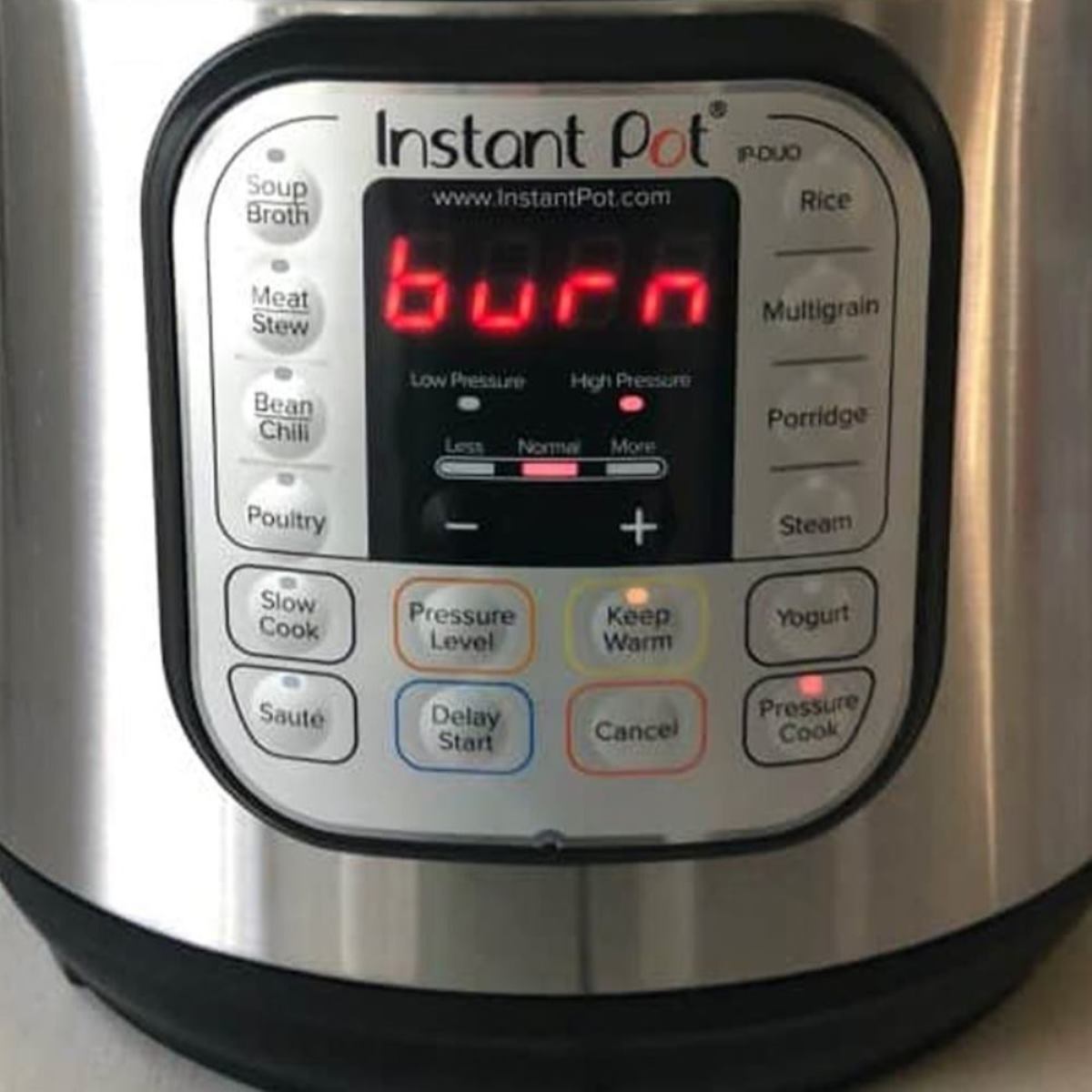
If you’re an Instant Pot user, you know how much of a game-changer this electric pressure cooker can be. However, issues with the Instant Pot display, such as it not turning on, can be frustrating and may require checking the power cord or trying a different outlet. But what happens when your trusty kitchen companion starts acting up?
Problems with the Instant Pot lid, like difficulties with locking or sealing, can also occur and might need troubleshooting to resolve. Maybe it’s displaying error codes, the buttons aren’t responding, or it’s just not cooking like it used to. Before you panic, know that resetting your Instant Pot can often solve these common issues.
Common Issues That May Require Resetting
In my experience, some of the most frequent problems that warrant a reset with instant pots include:
1. The dreaded “burn” message - This message typically indicates that the Instant Pot has detected excessive heat on the bottom of the inner pot, potentially leading to scorching or burning of the food inside. It's like a culinary red alert, warning you that something's amiss in the pot.
The "burn" message can be triggered by various factors, such as insufficient liquid, thick sauces, or food stuck to the bottom of the pot. To address this issue, it's crucial to carefully inspect the contents of the Instant Pot, stir if necessary, and add additional liquid if needed.
Sometimes, simply adjusting the cooking time or using the "Saute" function to deglaze the pot can help prevent further burning and salvage your meal.
2. Unresponsive buttons or display - This frustrating scenario can occur due to various reasons, such as a software glitch, moisture accumulation, or debris interfering with the buttons' contacts. When faced with unresponsive buttons or a frozen display, it's essential to perform some troubleshooting steps before hitting the panic button.
Start by ensuring that the Instant Pot is properly plugged in and that the power source is functioning correctly. Then, try gently cleaning the buttons and display with a dry cloth to remove any dirt or moisture. If the issue persists, a reset may be necessary to restore normal operation.
3. Difficulty building or releasing pressure - Difficulty building or releasing pressure can stem from various factors, such as a faulty sealing ring, improper sealing, or blockages in the pressure release valve. To troubleshoot this issue, start by ensuring that the sealing ring is properly installed and free of any damage.
Related: Should Instant Pot Steam When Cooking? Here's the Truth
Check that the pressure release valve is clear of any obstructions and that the Instant Pot lid is securely locked in place. If pressure continues to be an issue, a reset or further inspection may be necessary to pinpoint the root cause and resolve the issue.
4. Unusual behavior during cooking, like shutting off prematurely - Unusual behavior during cooking can be caused by various factors, such as power fluctuations, overheating, or sensor malfunctions. When encountering this issue, it's essential to pause cooking immediately and assess the situation.
Check that the power source is stable and that the Instant Pot is properly ventilated to prevent overheating. If the issue persists, a reset may be necessary to recalibrate the system and restore normal operation. Additionally, consider contacting Instant Pot customer support for further assistance if needed.
If you’ve encountered any of these, don’t worry - you’re not alone. A quick reset might be all it takes to get your Instant Pot back on track.
Benefits of Resetting Your Instant Pot
Think of resetting your pressure cooker as a fresh start. It can: - Clear any stored memory causing glitches - Restore default settings - Resolve minor technical issues without the need for repairs. Plus, it's a simple troubleshooting step you can do yourself, saving time and money. So before you toss your Instant Pot or send it in for service, try a reset first.
Identifying When to Reset Your Instant Pot
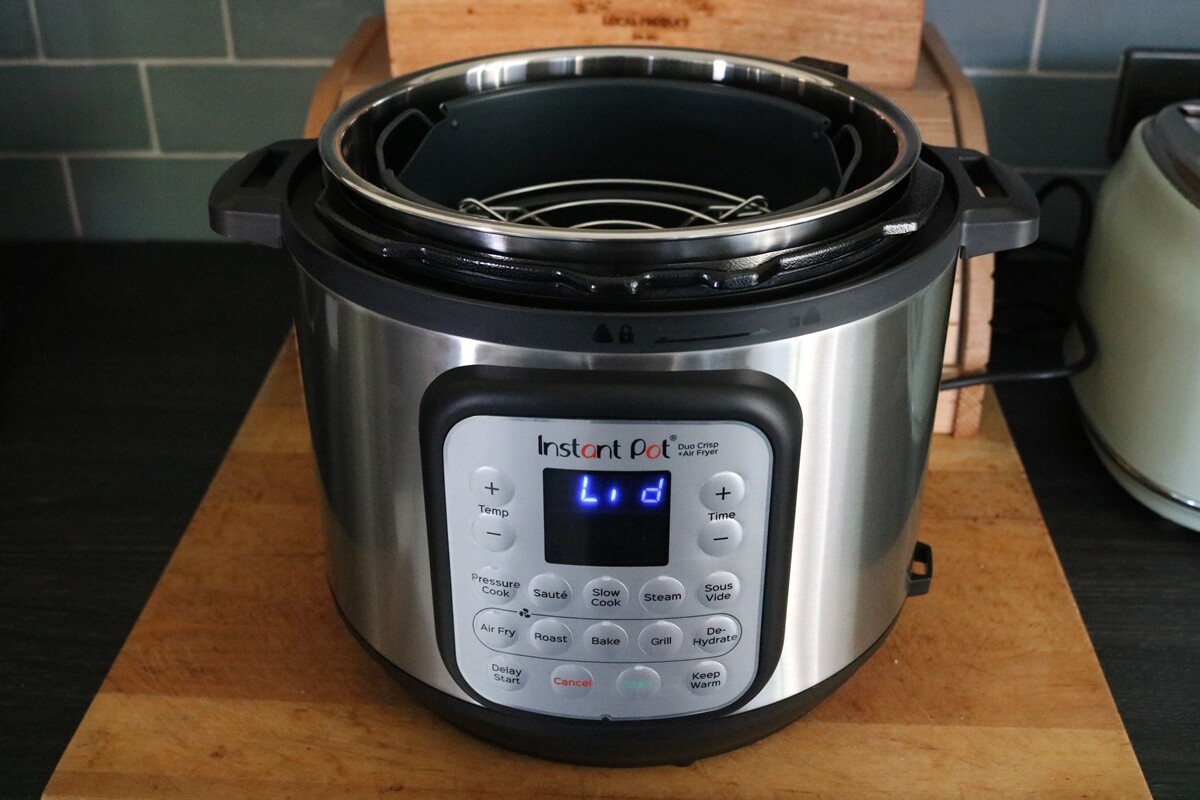
Now, how do you know when it's time to reset? Here are a few telltale signs:
Instant Pot Error Codes and Messages - Is your display flashing cryptic codes like “Lid,” “noPr,” or “Ovht”? These indicate issues with the lid, pressure, or overheating. It's important to consider the time it takes to release pressure, especially if the recipe requires a natural pressure release, as this can be crucial in troubleshooting these errors.
While some errors, like “Burn,” can be resolved by adding more liquid or removing burnt food, persistent errors often require a reset.
Unresponsive Buttons or Display -Unresponsive controls are a clear sign that your Instant Pot Pro, Instant Pot Duo Crisp, or Smart model Instant Pots need a reset. This can happen due to a software glitch or an interruption in power.
Related: Instant Pot Not Turning On? Quick Fixes to Try Today
Unusual Behavior During Cooking - Have you noticed your Instant Pot shutting off in the middle of cooking or failing to build pressure? The 'pressure cook' function is crucial for cooking various types of food like soup/broth, meat/stew, and bean/chili, and any issues with it can disrupt the cooking process.
These behaviors aren’t normal and could indicate a problem that a reset can fix. I once had a batch of chili that kept triggering the burn warning, even with plenty of liquid. A quick reset solved the problem, and dinner was saved.
Importance of troubleshooting before resetting
You know, before I hit that reset button on my Instant Pot, I always like to give troubleshooting a shot first. Why? Well, let me tell you—it's like giving my trusty kitchen buddy a chance to sort out its own hiccups before we hit the panic button. Plus, troubleshooting the Instant Pot Duo, Instant Pot Duo Crisp, Pro, or Smart model Instant Pots often uncovers simple fixes that save me a ton of time and hassle.
Now, don't get me wrong—there are definitely times when hitting that reset button is necessary. But by troubleshooting first, you can often save yourself the hassle of starting from scratch and losing all your custom settings. It's like giving Instant Pots a chance to work their magic and get back on track without wiping the slate clean.
So yeah, troubleshooting before resetting? It's become a bit of a ritual for me in the kitchen.
Also read: Is Your Instant Pot Dishwasher Safe? Find Out Here!
Step-by-Step Guide to Resetting Your Instant Pot
Alright, so you've determined it's time for a reset. Here's how to do it:
Preparing Your Instant Pot for Reset
Safety first. Before resetting, make sure to:
1. Unplug the power cord
2. Allow the pot to cool completely
3. Remove the inner pot and any food
4. Check the steam release valve and float valve for debris
For minor glitches, a soft reset might do the trick. Here's how:
1. Press and hold the "Cancel" button for 3 seconds
2. Release the button and wait for the display to clear
3. Plug the pot back in and test it out.
4. If the issue persists, it's time to bring out the big guns: a factory reset.
A factory reset will erase all custom settings and restore default ones. To do this:
1. Unplug the Instant Pot and plug it back in
2. Press and hold the "Cancel" button until the display reads "Reset"
3. Use the "+/-" buttons to select "Factory Reset"
4. Press the "Manual" button to confirm
After a factory reset, you'll need to re-enter any customizations, but your Instant Pot should be back in working order.
Troubleshooting Common Issues After Resetting
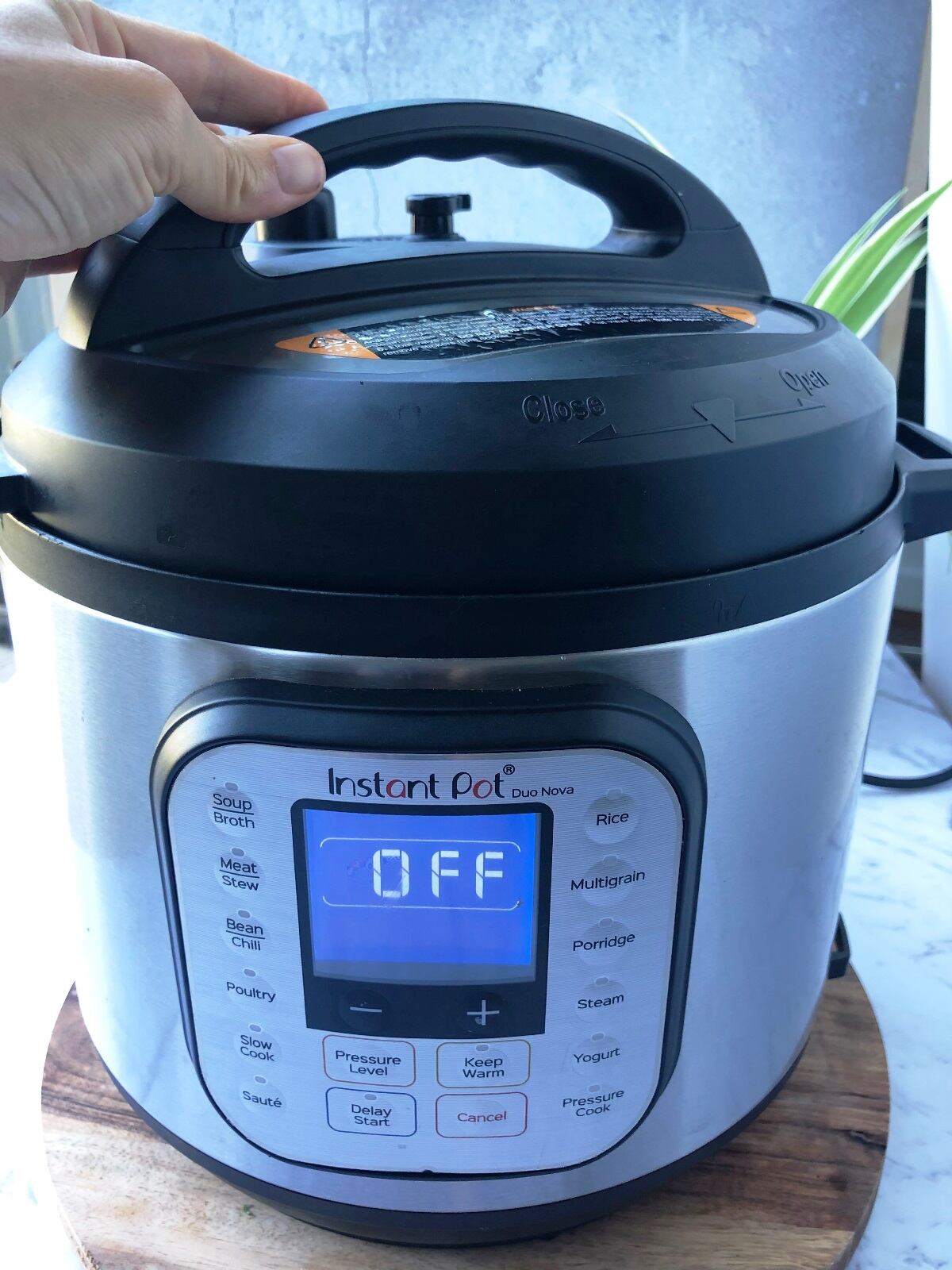
You've just reset your Instant Pot, but now you're running into some issues. Don't worry, I've been there too. Let's troubleshoot some of the most common problems that can crop up after a reset.
Addressing Leaks and Pressure Issues
If you're noticing leaks or having trouble building pressure after resetting your Instant Pot, the first thing to check is the sealing ring. Make sure it's properly seated in the lid and not damaged or deformed. A worn-out or misplaced sealing ring is often the culprit behind a leaky lid and all the pressure leaking out.
Next, take a look at the steam release handle. It should be clean and free from debris. If the valve is stuck in the "up" position, gently press down on it to ensure it can move freely.
Ensuring Proper Valve and Lid Placement
Proper placement of the steam release handle and float valve is crucial for your Instant Pot to build and maintain pressure. After a reset, double-check that the steam release handle is turned to the "Sealing" position before you start cooking.
The lid should also be locked securely in place. If you're having trouble closing the lid, ensure the sealing ring is properly positioned and the valve is not obstructed.
Preventing Food Burning
If you’ve reset your Instant Pot and find that your food is burning, there are a few things you can do to prevent this issue. First, make sure there’s enough liquid in the pot. The Instant Pot needs steam to build pressure, and without enough liquid during pressure cooking, your food may burn.
Following an instant pot recipe is crucial to ensure you use the right amount and type of liquid to avoid burning food.
Also, avoid adding thickeners like flour or cornstarch directly to the pot before pressure cooking. These can settle on the bottom and scorch. Instead, mix them with a little cold liquid first, or add them after the cooking process is complete.
Maintaining Your Instant Pot for Optimal Performance
Regular maintenance is key to keeping your Instant Pot pressure cookers running smoothly and avoiding the need for frequent resets. Here are some tips to help you keep your appliance in top shape:
Regular Cleaning and Maintenance Tips
One of the most important things you can do to maintain your Instant Pot is to clean it regularly. After each use, remember to perform a natural pressure release to ensure all steam and pressure are safely released before cleaning.
Remove the inner pot and lid and wash them with warm, soapy water. The sealing ring should also be removed and cleaned after each use to prevent odors from lingering.
When cleaning the exterior of your Instant Pot, avoid harsh chemical detergents or abrasive scouring pads that could damage the surface. A soft, damp cloth is usually sufficient for wiping down the outside of the appliance.
Replacing Worn Out Parts
Over time, certain parts of your Instant Pot may wear out and need to be replaced, especially after quick release. The sealing silicone ring, in particular, should be replaced every 12-18 months, or sooner if it becomes stretched, deformed, or damaged.
When replacing parts, be sure to use genuine, food-grade components designed specifically for your Instant Pot model. Using off-brand or ill-fitting parts can lead to leaks, pressure issues, and other problems.
Proper Storage Practices
When your Instant Pot is not in use, proper storage can help prolong its life and prevent damage. After cleaning, make sure the appliance is completely dry before putting it away. Store the lid upside down on the pot to allow air circulation and prevent moisture from getting trapped inside.
If possible, keep your Instant Pot in a cool, dry place away from direct sunlight or extreme temperatures. Avoid stacking heavy items on top of the appliance, which could damage the lid or control panel.
Exploring Advanced Features and Settings
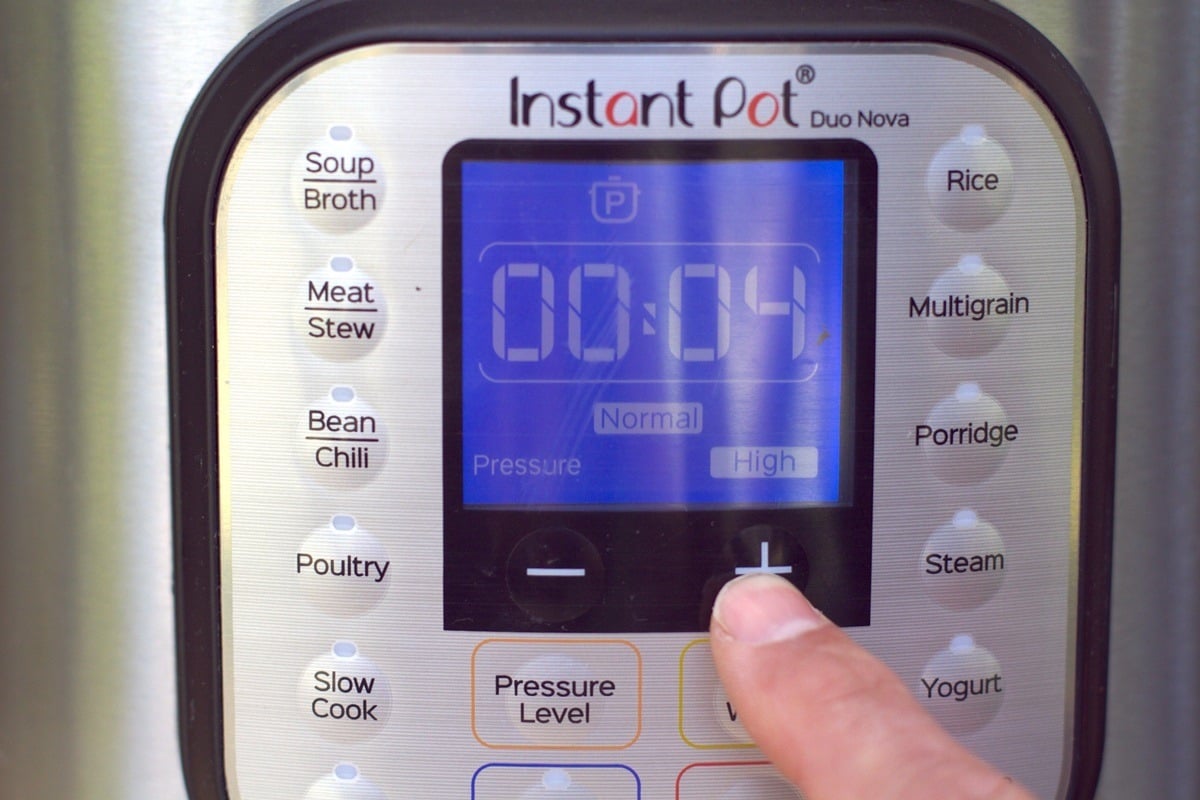
Once you've mastered the basics of using your Instant Pot, it's time to explore some of the advanced features and settings that can take your cooking to the next level. Here are a few things to try.
Adjusting Cooking Time and Pressure Levels
Different recipes may call for different cooking times and pressure levels. To adjust these settings on your Instant Pot, use the "+" and "-" buttons to increase or decrease the cooking time. You can also press the "Pressure Level" button to toggle between high and low-pressure settings.
Keep in mind that changing the pressure level will also affect the cooking time. Higher pressure when used in conjunction with quick release will cook food faster, while lower pressure will take longer but may be gentler on delicate ingredients.
Using Delay Start, Keep Warm Functions, and Natural Pressure Release
The Delay Start function allows you to set your Instant Pot to start cooking at a later time. This is great for prepping ingredients in the morning and having dinner ready when you get home from work. To use this feature, press the "Delay Start" button and use the "+" and "-" buttons to set the desired delay time.
The Keep Warm function, on the other hand, maintains your food at a safe temperature until you're ready to serve it. This function automatically turns on after the cooking cycle is complete, but you can also turn it on manually by pressing the "Keep Warm" button.
Customizing Smart Programs
Many Instant Pot models come with pre-programmed smart programs for cooking specific types of food, such as rice, soup, or meat. Pressure cook recipes are essential for utilizing these features effectively, as they provide detailed guidance on using the various settings and functionalities. These programs have default settings for pressure level and cooking time, but you can customize them to suit your preferences.
To adjust a smart program, select it using the corresponding button, then use the “+” and “-“ buttons to change the cooking time or the “Pressure Level” button to adjust the pressure. Your customized settings will be remembered the next time you use that program.
Common FAQ's
If the float valve on your Instant Pot is stuck and causing issues, resetting the appliance may help resolve the problem. Start by turning off the Instant Pot and allowing it to cool down completely. Once cooled, unplug the Instant Pot, then plug it back in and follow the manufacturer's instructions for resetting your specific model.
If your Instant Pot is stuck in the pressure cooking cycle and won't respond to commands, a reset may be necessary to regain control. Begin by unplugging the Instant Pot and allowing it to cool down. Once cooled, plug it back in and follow the manufacturer's instructions for resetting your specific model.
Yes, resetting your Instant Pot can sometimes resolve issues with the slow cook function, such as unresponsiveness or error messages. Follow the manufacturer's instructions for resetting your specific Instant Pot model to see if it helps restore normal operation.
If resetting your Instant Pot doesn't resolve the issue you're experiencing, there may be a more significant underlying problem that requires further attention. In such cases, it's essential to explore other troubleshooting steps or consider contacting Instant Pot customer support for assistance.
They may be able to provide additional guidance or recommend repair options if necessary. Additionally, if your Instant Pot is still under warranty, you may be eligible for a replacement or repair service, including resetting to factory default settings, so be sure to check the warranty terms and conditions for more information.
Resetting your Instant Pot typically does not directly affect its pressure cook performance. Instead, resetting is often a troubleshooting step to address issues that may be hindering performance, such as frozen displays or unresponsive buttons.
By resetting the Instant Pot, you're essentially rebooting the system, which can help resolve software glitches or minor malfunctions that may be impacting pressure cooking performance. However, if the issue persists after resetting, it may indicate a more significant problem that requires further investigation or professional assistance.
Conclusion
Resetting your Instant Pot is like hitting the reset button on a frustrating day. It gives you a clean slate and a chance to start fresh.
By following these simple steps, you can troubleshoot common issues, restore factory settings, and get back to cooking with confidence. No more mysterious beeps – just you and your trusty Instant Pot, ready to tackle any recipe.
So go ahead, give your Instant Pot a little TLC, and watch it come back to life. With a little patience and know-how, you'll be the master of your pressure cooking today.







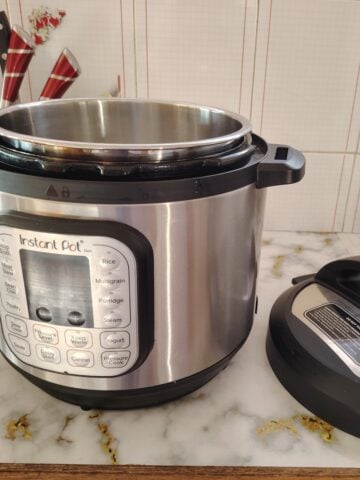


Leave a Reply